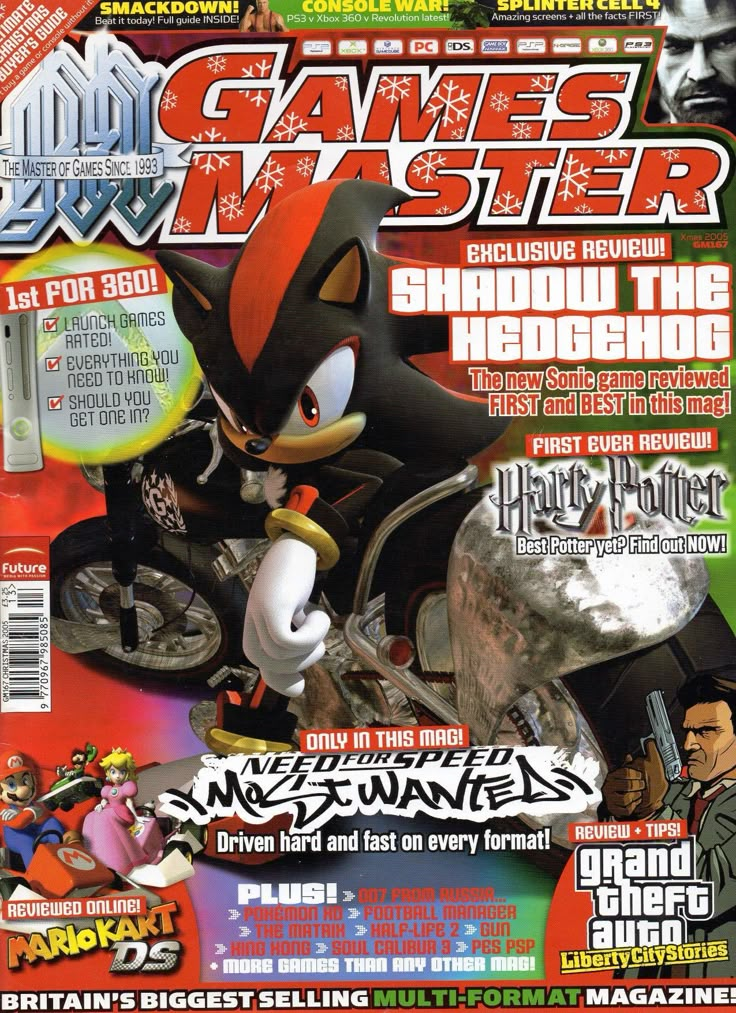
“Hey, thats…!”
Continuing off of my metaphorical high generated from my analysis of Sonic the Hedgehog and Daisy Buchanan being literary parallels, I couldn’t help but continue to traverse deeper into the rabbit hole of finding unexpected parallels between anthropomorphic hedgehogs and the world of TGG. My brain has never been so unseriously, yet intellectually, stimulated like this before. The combination of a deeply rooted personal interest stemming from my childhood and a newfound appreciation of Fitzgerald’s The Great Gatsby alongside taking a course dedicated to its endurance in the 21st century has allowed for connections one would never even conjure nor entertain.
When you think of The Great Gatsby, your mind certainly does not immediately think of Shadow the Hedgehog (honestly the entire Sonic franchise as a whole really). Shadow is one of the most complex and well-written characters of the Sonic franchise. He gives the blue blur a run for his rings in their iconic rivalry and when it comes to winning the affection of the fans. There are a surplus amount of feature film-length video essays on YouTube that do deep dives into Shadow as a character, what he represents, and why he’s the unofficial 2nd face of the Sonic franchise. Sorry Tails!
Why Shadow the Hedgehog Resonates
Besides his contrasting design and color palette compared to Sonic and his friends, Shadow maintains interest from the fans because of his oddly adult-like, mature characterization. What makes Shadow such a compelling character isn’t just his edgy 2000s demeanor or his sleek design—it’s the emotional baggage from his traumatic past constantly weighing him down (until 2024’s Sonic X Shadow Generations, but we’re getting ahead of ourselves). The nature of his internal conflict is pretty heavy for a franchise rated E for Everyone.
Actually, there was almost an exception to that rating. The exception being Shadow the Hedgehog [2005] which would have received a rating T for Teens if they didn’t manage to squeeze it into the E10+ rating under the suffocating terms “fantasy violence” and “mild language.” Shadow was really pushing it. His solo game featured him throwing out the word “Damn!” like a kid that just discovered curse words. Of course, I can’t leave out the part where SEGA let him use guns to shoot at the Sonic equivalent of federal government agents.
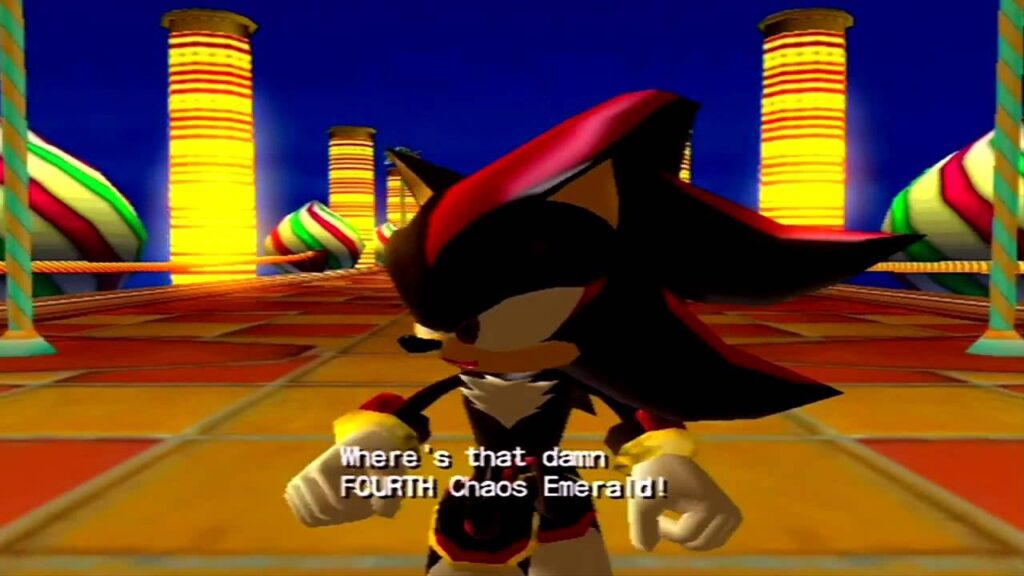
I’m getting ahead of myself. Excuse me.
A Rival Forged by Grief: Shadow’s Role in Sonic Adventure 2
Shadow made his debut in Sonic Adventure 2 back in 2001. At the time, Shadow was only a mysterious brooding hedgehog with striking similarities to Sonic and nothing more until later entries in the franchise.
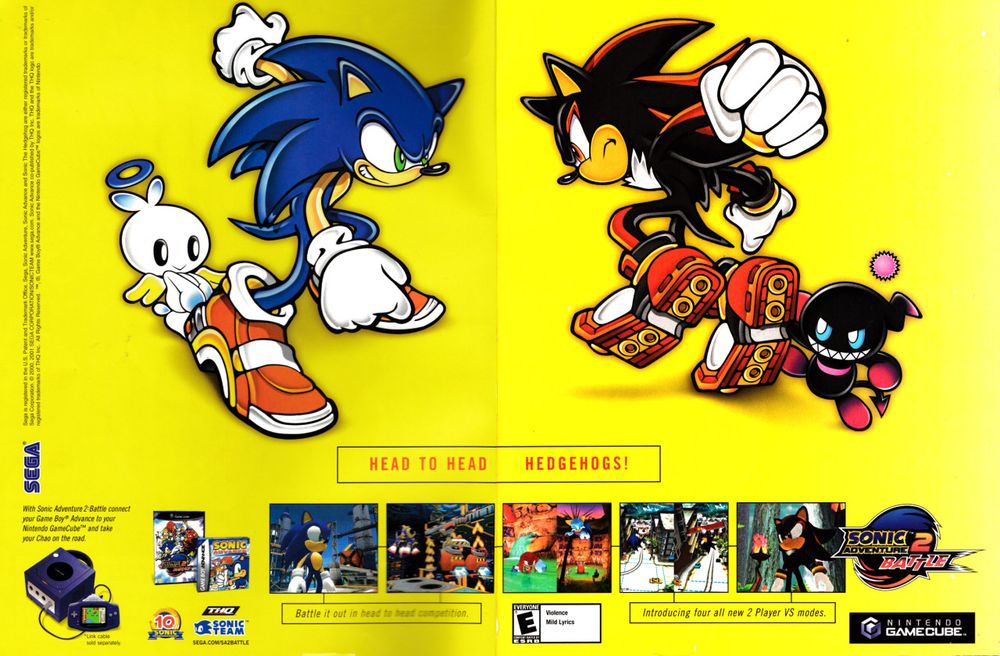
Okay, I know what you’re thinking. “…Sonic and Shadow don’t really look alike at all.” You are correct in thinking that because, well…yeah. Sonic is an electric blue hedgehog and Shadow looks like a Hot Topic mascot. It should be noted that during the development of Sonic Adventure 2 Shadow’s design was changed at the last minute because the team and execs weren’t really feeling the vibe. Cold feet. Unfortunately due to how far they were into the development process, they just decided to keep the plotline of “He looks just like you Sonic!” It was only until last year, 2024, where Shadow’s beta design was released to the public in celebration of the Fearless Year of Shadow. I am unable to verify whether this is Sonic Team’s official name or if it was a name coined by the fans (both are equally possible honestly), but his beta design is referred to as Terios the Hedgehog. Some fans joke around about how Terios is what Shadow looked like before his Black Arms ancestry was inserted into him.
Putting a hold on that thought, let’s return back to the topic of Shadow’s debut game: Sonic Adventure 2. We meet Shadow through both the Hero story (Sonic, Tails, Knuckles, etc.) and the Dark story (Shadow, Rouge, and Dr. Eggman). It doesn’t matter whether you’re Team Hero or Team Dark, you’ll inevitably cross paths with Shadow. One thing remains constant within Shadow through both storylines. He’s a character full of internal inconsistencies. Alongside being Sonic’s new rival who can keep up with everything Sonic can do, Shadow acts as a narrative foil to Sonic in a way that reshaped the emotional core and complexity of the franchise. Sonic zips through life fueled by optimism, a love for freedom, and is constantly assured by nature itself for him to continue living this way. Shadow walks through life carrying the weight of loss, betrayal, and existential dread all of which are a result of his past traumas. His burdens manifest through his anger, confusion, and search for a satisfying conclusion for what caused him to be the hedgehog he is in the game. But what exactly would that look like?
What even happened to Shadow in the first place?
The Ultimate Lifeform: Origins of Project Shadow
That question forms the emotional spine of Sonic Adventure 2. Shadow doesn’t even fully know the answer himself. His memories are fractured, resurfacing in broken inaccurate flashes of a girl named Maria, a space station called the ARK, and a promise he doesn’t fully understand. Unlike Sonic, who lives firmly in the present and by flying by the seat of his pants, Shadow is haunted by the past—a past he can’t clearly remember, but one that defines his every action.
As players, regardless of whether you’re Team Hero or Team Dark, we uncover Shadow’s origins alongside him. We learn that he was created on the Space Colony ARK to serve as the “Ultimate Lifeform” by Professor Gerald Robotnik, Eggman’s grandfather. The Ultimate Lifeform, or Project Shadow, was commissioned by the United Federation (Sonic universe United States) to create a biological, invulnerable, and immortal being for “science.” Obviously whether it’s fiction or reality, if a powerful global entity is requesting a project with those characteristics, they’re intending on using it as a weapon. Gerald saw this, so he initially refused to work on it for that reason and another: creating an immortal and invulnerable being was like playing God. That scared Gerald. But what changed his mind?
If he could create an immortal, invulnerable being, then perhaps Project Shadow can serve as a means of discovering a cure to all illnesses and the key to all manner of medicines. While that is a noble mission to take on in itself, Gerald’s main purpose for changing his outlook was due to his granddaughter Maria. Maria was terminally ill, presumably with NIDS (Neuro-Immuno Deficiency Syndrome), and Shadow functioned as a desperate scientific hope for curing her. (She boarded the ARK so that the low gravity could keep her condition in remission.) Thus, Gerald returned to the United Federation to accept the duty of overseeing, bearing the responsibilities, and giving Project Shadow life.
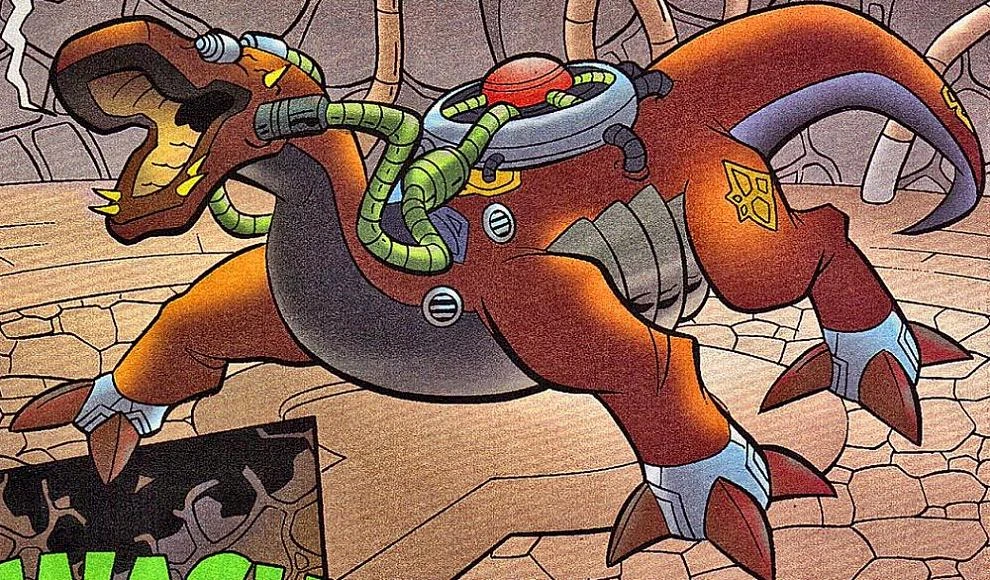
Gerald created the Biolizard, a mutant salamander with destructive tendencies, as the first attempt at creating the Ultimate Lifeform. How did we get from a salamander to a hedgehog? Why use a salamander?
Gerald Robotnik's Journal
Entry #530
Research into “Project: Shadow” is in full swing. The first step has been learning how to siphan [REDACTED] Emerald energy and apply it to living tissue. To that end, I’ve developed the “Chaos Drives.” Direct application seems too harsh. Any organism that could directly interface with an emerald would be fearsome indeed!
The initial tests were promising, so we’re now moving on to the next state in trials. I will be using salamanders for their regenerative abilities and manageable size. We will begin applying Chaos Drives to the test subject and see how its vitals respond.
Entry #568
“Project: Shadow” has reached an impasse. The subject exhibits accelerated cellular growth, to the point it cannot support its own biological systems. I’ve developed an external life-support system to compensate, but it will need to be upgraded and redesigned as the subject continues to grow. The way it thrashes and roars…it is uncontrollable.
Entry #616
Desperate times call for desperate measures, and I am a desperate man.
The Black Comet returned to Earth on its fifty-year orbit. I had no idea it actually harbored [REDACTED]. Aboard it was [REDACTED]. Somehow he knew about the [REDACTED] and seemed impressed with my work. He offered me a Faustian deal. I accepted.
Using his DNA, I was able to overcome every hurdle “Project: Shadow” had put before me. The small, sturdy biped I developed can perfectly interact with [REDACTED] energy.
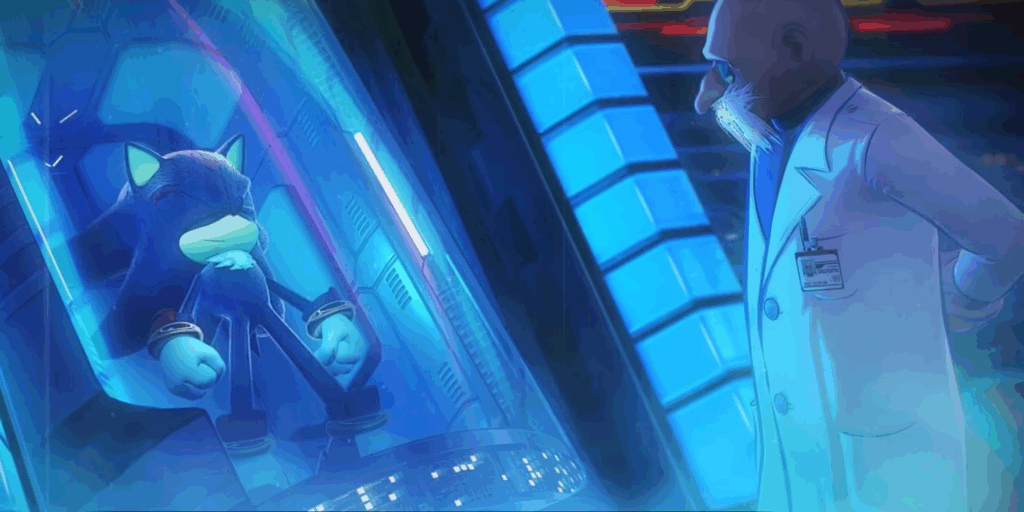
Now that we know how Shadow was conceived, how does this play a role in the brooding amnesiac hedgehog we know in Sonic Adventure 2? The nature of Project Shadow is inherently risky and dangerous due to its Faustian nature. The United Federation would call off the project at the first sight of any danger Project Shadow would put its creators and commissioners in. Referring back to Gerald’s Journal, the Biolizard still exists in secure confinement due to its failure and destructive nature. While this hot pot of water is simmering on the stove, Shadow is living on the ARK with Gerald and Maria very happily. Shadow and Maria form a close sibling-coded companionship. It’s one of my favorite elements of Shadow’s origins and elements in the Sonic franchise as a whole. They’re just so darn cute and sweet.
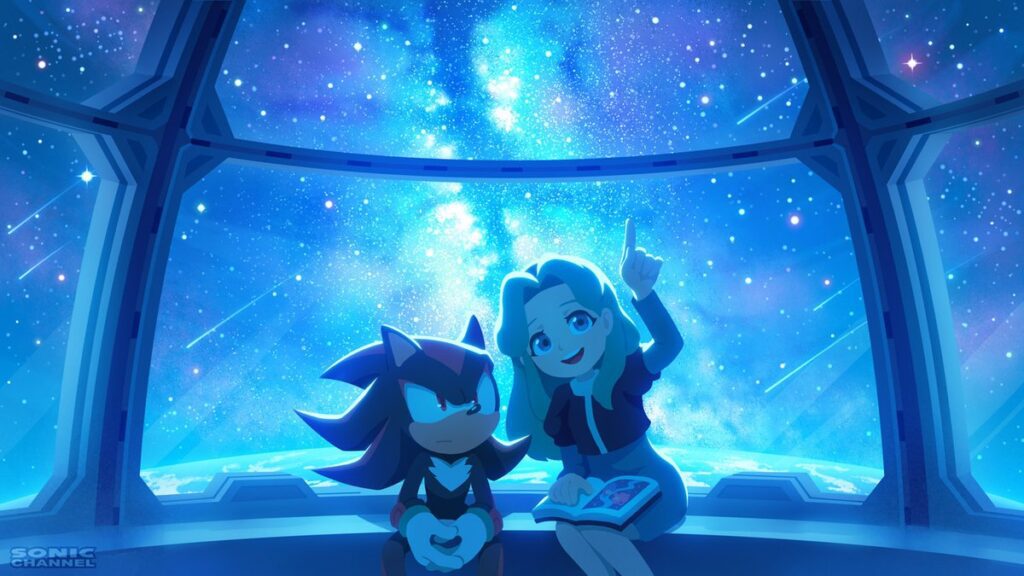
Blood and Traumatic Memories: The ARK Disaster
So what happens to her? Remember the Biolizard and its destructive nature? Yeah…so the Biolizard decided one day that it had enough and started wrecking everything to a very noticeable degree. The accident gave GUN (Guardian Units of Nations, Sonic world CIA) the green light to raid the ARK. GUN was tasked with locating and securing everything relating to Project Shadow alongside capturing Gerald Robotnik. What about everyone else on the ARK? The ARK had unrelated Project Shadow inhabitants aboard; Maria being classified as such. GUN decided that anything outside of their designated parameters was to be dealt with “accordingly.”
By that, I mean that they killed Maria in front of Shadow. Before she died, she was able to save Shadow by getting him to an escape pod and sent him off to Earth. Before she collapsed, she shared her final words.
Shadow, I beg of you…Please, do it for me…for a better future! For all the people on that planet…Give them a chance to be happy.
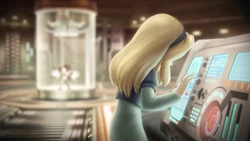
Shadow crashes on the surface of the Earth and is soon quickly discovered by GUN. He is put into suspended animation for fifty years until Eggman wakes him up and kickstarts the events of Sonic Adventure 2.
Memory, Trauma, and the Warping of Self-Purpose
Alright, so if Maria’s last words were lined with very clear instructions, why is Shadow so confused on what he wants or who he is in Sonic Adventure 2 fifty years later?
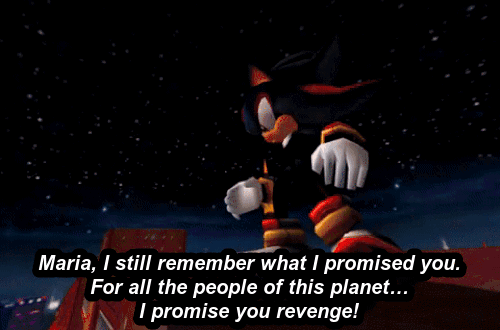
The answer lies in the way memory and trauma interact. Shadow wasn’t merely put into stasis for five decades; he was sealed away with a freshly traumatic event implanted into his brain. His psyche was unstable and fractured. Can you imagine that gruesome scene replay in your mind on an endless loop for fifty years? His memories of Maria, the tragedy of the ARK, and even the purpose of his existence were damaged and distorted by both time and trauma. His trauma manifested as anger, so his brain twisted Maria’s final words to fit a vengeful narrative when he reawakened. It’s a tragic emotional imprint rather than a coherent directive. Shadow didn’t wake up with clarity; he woke up with grief and a heavy heart. Maria’s plea is not a clear memory anymore. It’s now a corrupted memory due to being put through the filter of his internal suffering.
So when Shadow returns to the world in Sonic Adventure 2, he is not driven by Maria’s hope. He is driven by vengeance masked as purpose. He thinks he is fulfilling Maria’s dying wish, but he misremembers it as a command for retribution instead of peace. This tragic confusion creates the emotional core of his character arc. Shadow isn’t evil; he’s misled by his own brokenness. His internal conflict—between destructive purpose and selfless legacy—is what ultimately leads him to his climatic decision: to save the world by sacrificing himself, believing that it was the only way to atone for his vengeful actions and immoral decisions he made since his reawakening and honor Maria’s true wish.
Shadow’s Soundtrack: “Supporting Me” and the Echo of Pain
Much like my leitmotif segment of my post about Sonic and Daisy Buchanan, I would also like to dedicate a similar music-related segment towards Shadow to continue to support my assertion.
One notable way Shadow’s internal dissonance is represented in Sonic Adventure 2 is through music. One of the most pivotal tracks to Shadow’s story is “Supporting Me…for the Biolizard” which plays when he is fighting the Biolizard while Sonic and Knuckles are trying to retrieve the Chaos Emeralds from the core of the ARK. The song is very mournful, haunting, and raw. It’s not the music of a typical boss fight. It wails with the sounds of anguish. A similar example of this musical phenomena can be found in Avatar: The Last Airbender during Zuko and Azula’s final Agni Kai. Anyways, a lot of fans interpret “Supporting Me” not only as the Biolizard’s swan song, but also as a reflection of Shadow’s internal torment as well as foreshadowing to the true final fight of Sonic Adventure 2.
I believe in my future, farewell to the shadow
It was my place to live, but now I need your hand
Lead me out with your light, I have breathed in
The disgusting air of darkness, but I never lose out
To the pressure, everything is just like
An illusion, I’ll be losing you
Before long…
- From "Supporting Me...for Biolizard"
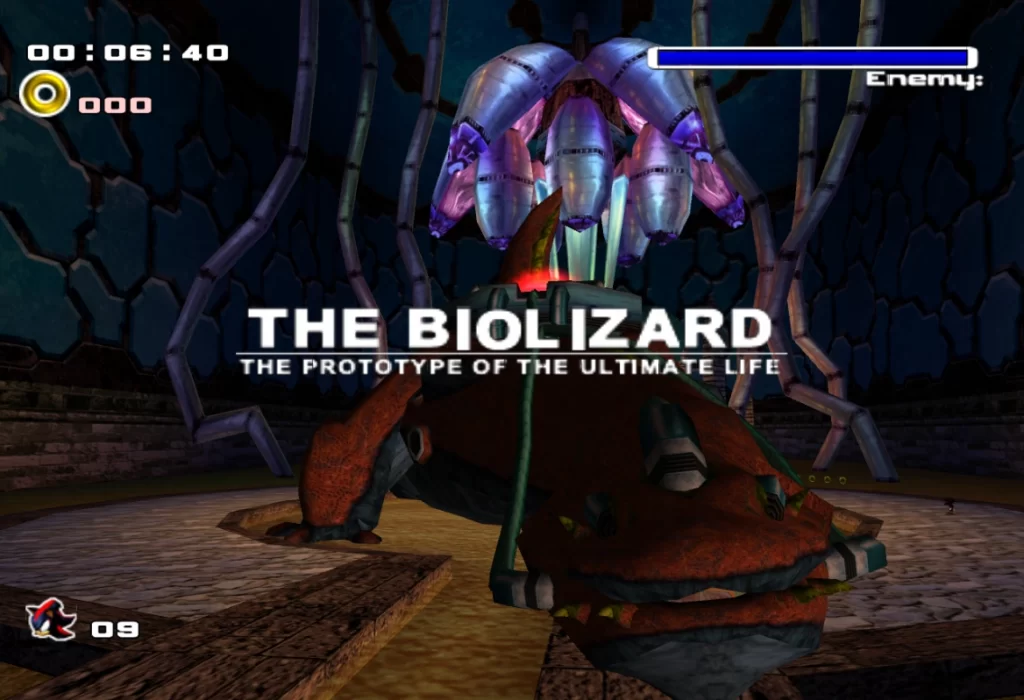
These lyrics—fragmented, desperate, pleading even—read like a dying confession. Whether you choose to interpret them as the Biolizard’s final thoughts or as an echo of Shadow’s inner psyche, they speak of a soul that has been twisted by isolation, hate, and stripped of clarity. “Farewell to the shadow” does not only just serve as a metaphor for leaving the darkness behind us. It’s also a literal farewell to being Shadow, the Ultimate Lifeform, the failed science experiment, and the symbol of tragedy of those who placed their faith in him. Shadow, in that moment, is finally confronting the place and intention that gave him life and all of the unresolved persistent pain it symbolizes.
The Biolizard, one of the most underrated Sonic villains in my opinion, represents what Shadow could have become if he had succumbed entirely to bitterness and destruction. It’s no wonder that the Biolizard is one of the first boss fights in Sonic X Shadow Generations [2024] because the Biolizard represents Shadow in both a literal and figurative sense. Their battle, in both games but mainly Sonic Adventure 2, isn’t just a climatic set piece for wow factor alone. It’s a confrontation of a mirrored self. The Biolizard is a grotesque, incomplete, enraged, vengeful, and shackled being which is everything Shadow fears he might be. Fighting it not only serves as a means of confronting the bloody and tragic legacy of Project Shadow, but it’s also a confrontation of the dark impulses present inside Shadow himself.
And then, when Shadow defeats the Biolizard, it fuses to the ARK to form the FinalHazard and begins its deadly descent towards Earth as an act of retribution. When all seems lost, Shadow decides to fight not out of vengeance but rather out of acceptance. The soundtrack shifts.
The most iconic song in the Sonic franchise, “Live & Learn,” kicks in.
(Sonic “kicks in” too by taking back the Chaos Emeralds and going Super alongside Shadow, but that’s beside the point.)
Live and Learn: The Climax and Closure of Shadow’s Arc in Sonic Adventure 2
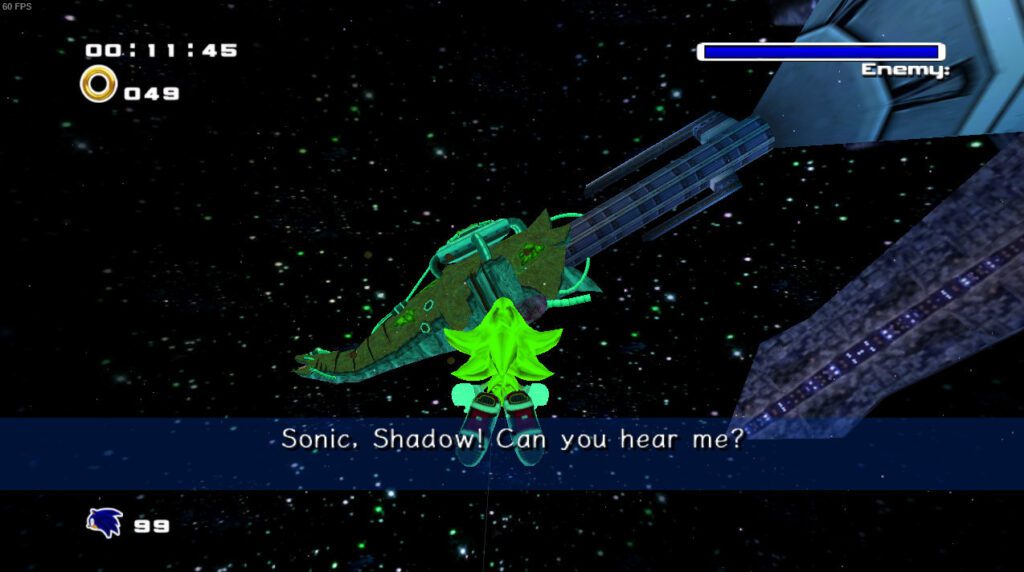
We no longer hear the melodic cries of melancholic anguish. Instead, our ears are flooding with a booming rock’n roll song that embodies defiance, action, acceptance, and clarity. “Live and Learn” is fast, loud, and triumphant. The denial of pain is no more; acceptance has finally taken the reins. Acknowledgement is present through the lyrics “You may never find your way…” but still charges forward regardless of uncertainty. Thematically speaking, it’s as if Shadow is responding to the sorrowful, grief-ridden tones of “Supporting Me” by offering a resolution with “Yeah, I’ve breathed in the disgusting air of darkness, but I’m not going to let that define me.”
The shift in sound and genre reflects a shift in character. The emotional register of the game transforms. It is no longer mournful; it’s determined to see the end. Shadow’s character arc in Sonic Adventure 2 concludes in self-sacrifice rather than a spiral of despair and illusion leading to a tragic ending out of his hands. He made the choice himself.
After defeating the FinalHazard and successfully saving the world, Shadow falls down to Earth remembering Maria’s final words as Sonic watches him plummet to his end.
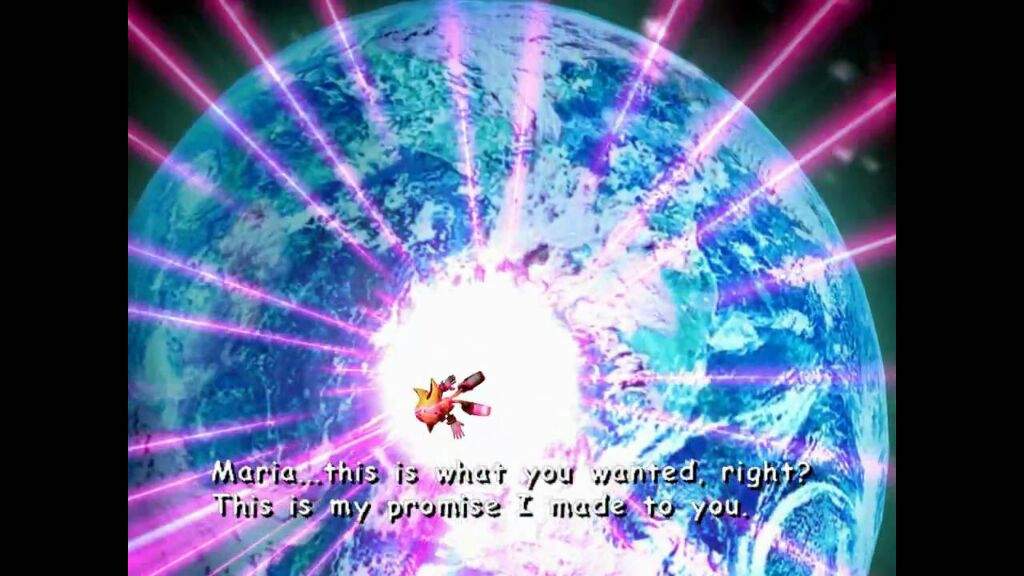
What a bittersweet, satisfying conclusion for Shadow.
Gatsby never got that.
Gatsby’s Silence: When the Music Never Shifts
Gatsby doesn’t get a “Live & Learn” moment. If anything, he lives and repeats. His internal melody is stagnant. It loops the same chords of hope, delusion, and longing until it finally fades out with the echoes of a gunshot. If Shadow’s “Supporting Me” and “Live and Learn” serve as metaphors for a journey from torment to freedom, Gatsby’s theme would be something jazz-infused—nostalgic, warped, and endlessly skipping on a broken gramophone. It’s never granted the space to crescendo into something transformative. It meekly drifts through his empty mansion like the ghost of a life he never truly lived.
If “Supporting Me” captures the weight of Shadow’s existential burden—an anguish born from the ARK tragedy and the death of Maria—then Gatsby’s equivalent is the silence that haunts Fitzgerald’s, or Nick Carraway’s, pages. It’s the eerie silence that follows the Roaring Twenties. It’s the stillness of Gatsby’s mansion after the guests leave. It’s the silent anticipation from waiting for a phone to ring. It’s the stillness of the pool before he’s shot. Where Shadow’s trauma screams and eventually learns to sing a new song, Gatsby’s internal dissonance is a strangled muffle—the sound of a man suspended in time, waiting for an answer that will never come.
War, Reinvention, and Shell Shock: Gatsby’s Emotional Fallout
There is a compelling parallel between the events that shape both characters: the ARK disaster for Shadow and World War I for Gatsby. Both are catastrophes that mark the end of innocence and the beginning of deep psychological fractures. Gatsby’s post-WWI reinvention is eerily similar to the purpose Shadow was given. Shadow was meant to be the Ultimate Lifeform—a project with Faustian origins and implications—but as we discover through his character arc, he takes back that label and redefines himself. Gatsby transforms himself into the “Oxford man,” a wealthy hopeless romantic, to win the hand of Daisy. But just like Shadow at the beginning of Sonic Adventure 2, Gatsby doesn’t fully understand what he is doing. Shadow misremembered the nature of Maria’s final wish and interpreted it as a call for retribution against humanity. Gatsby, too, misremembers Daisy, or in more accurate terms: he remembers a version of her that never truly existed. His memory of her isn’t really her.

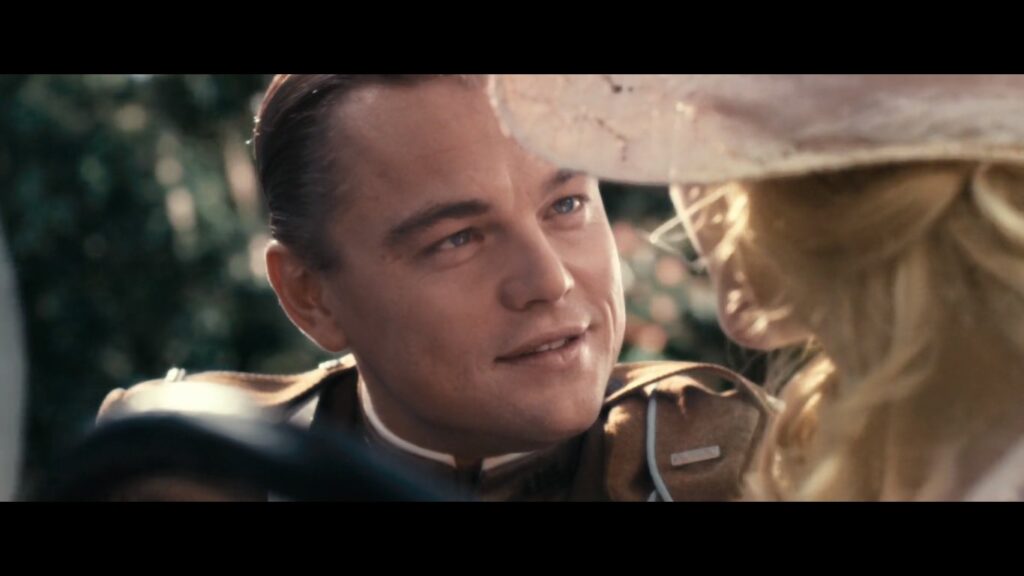
Gatsby is captured in the lingering deafening silence that follows war. The silence is the personification of those moments of unbearable stillness that haunts soldiers long after they have returned home from the battlefield. His reconstruction of life is a coping mechanism. He is trapped in the liminal space between who he was before the trauma and who he pretends to be now to cope. This could be said of anyone that suffers from PTSD; Gatsby is one of most notorious examples from classic literature that comes to mind.
The Dream That Killed Him: Gatsby and his Romanticized Past
At the heart of Gatsby’s tragedy is not just his death and delusion, but his failure to bridge the past with the present. “Can’t repeat the past? Why of course you can,” he says whilst blind to the fact that his dream—Daisy, the green light, the version of himself he obsessively constructed to win her hand—is nothing more than an illusory dream. It’s a delusion built on memory and denial. Shadow wrestles with forgetting; Gatsby is cursed with remembering too much. Despite their differing motives—vengeance versus romantic love—they mirror each other in their refusal to let go of a world that no longer exists.
While Shadow loses Maria and suffers amnesia, Gatsby loses his sense of self and suffers from a form of emotional shell shock. He comes home from war and reinvents himself, not as a means to survive but rather as a means to chase a phantom. Like Shadow, Gatsby becomes a man defined by a past he cannot fully grasp or reconcile. However, unlike Shadow, he is never given the narrative space to heal. The outcomes of their stories are drastically different.
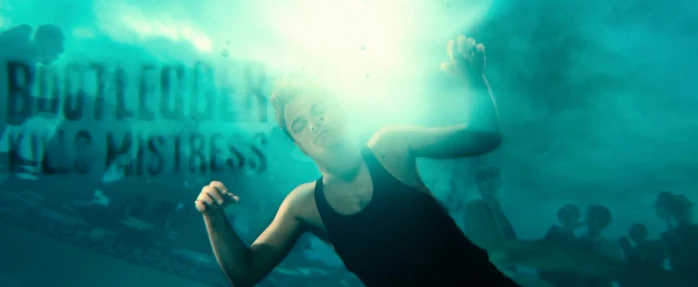
Hope vs. Stillness: The Diverging Fates of Gatsby and Shadow
There’s a reason why The Great Gatsby ends in death while Sonic Adventure 2, despite Shadow’s sacrifice, ends in hope. “Live and Learn” doesn’t just reflect Shadow’s growth; it’s a thesis statement. It’s a musical release of emotional tension. Shadow chooses to move forward: to live with the past rather than in it.
Shadow returns in later entries of the Sonic franchise not just as a rival, but as someone who learns to define himself outside the trauma that once consumed him. Shadow is allowed to live. He is allowed to change. He breathes beyond the weight of “Supporting Me” and answers it with the triumph of “Live and Learn.” Gatsby never gets that luxury. He’s killed by his past. He doesn’t get to challenge his theme. He doesn’t get a reprise. All he gets is Nick carrying on his memory.
“So we beat on, boats against the current, borne back ceaselessly into the past.”
Gatsby died, and he stays dead.
Narrative Mercy and Narrative Doom: Who Gets to Heal?
In the end, what separates Shadow the Hedgehog and Jay Gatsby is not the depth of their trauma, nor the scale of their losses, but the narrative possibility each is offered. Shadow is granted the space to remember, to grieve, to self-actualize, and to transform into what he is today in the franchise. Gatsby is frozen, beautifully and tragically, in the amber of Fitzgerald’s prose. He is never given the chance to grow beyond the dream that sentenced him to death.
In an odd way, both characters are born from experiments. One was conceived in a laboratory orbiting Earth, and the other is the product of the crucible of war and reinvention. Both are haunted by the dead—Maria and the Daisy he “knew” before WWI—and both construct elaborate complex personas and motivations that are represent what they think their lives are supposed to be after it all.
But only one of them learns to see beyond the illusion. He gets to live.

Shadow’s final words in the “true ending” of shadow the hedgehog [2005]
“Goodbye forever…Shadow the Hedgehog.”
Shadow’s arc tells us that trauma is not the end; it’s the beginning of something painful but transformative. Gatsby’s story reminds us what happens when we let the past imprison us. They’re two sides of the same coin: characters built on tragedy and suspended between memory and identity.
But Gatsby’s story ends in death.
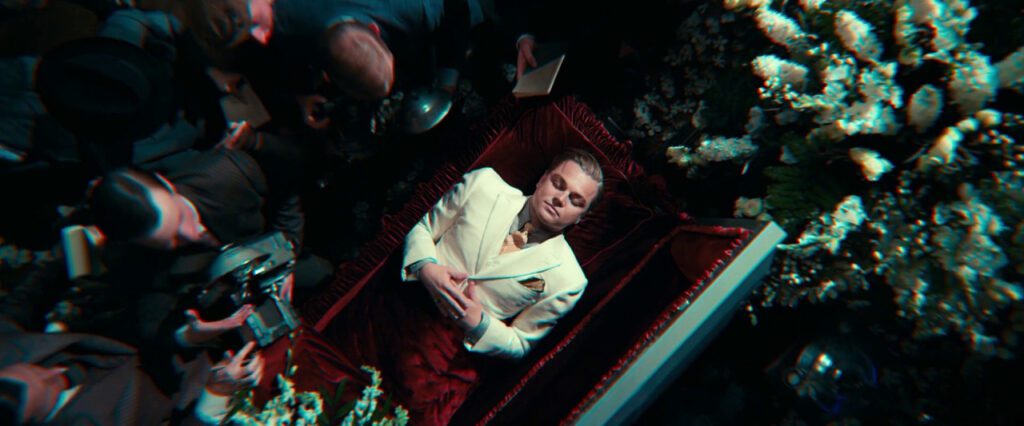
Perhaps that’s why so many fans still resonate with Shadow and are so invested in his story. Shadow acts as figurative literary proof that even in a kiddie high-speed video game universe, a story of loss, confusion, and healing can take place. The reason why we continue to discuss Gatsby is why his story remains a classic a century later. It’s not because we admire him, but because we recognize that all of us, at some point, stare longingly at a light we’ll never reach.
Bibliography
Crush 40. “Live & Learn.” Sonic Adventure 2 (Original Soundtrack), Vol. 2, SEGA, 2002.
Bradley, Everett. “Supporting Me…for Biolizard.” Sonic Adventure 2 (Original Soundtrack), Vol. 2, SEGA, 2002.
Fitzgerald, F. Scott. The Great Gatsby.
Sonic Adventure 2, SEGA, 2001.

Leave a Reply
You must be logged in to post a comment.